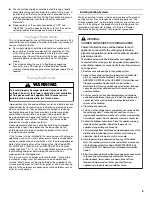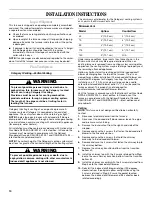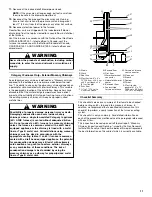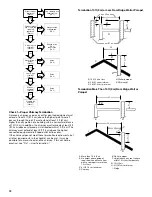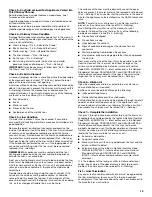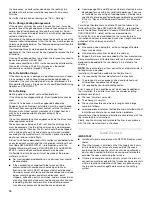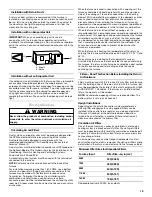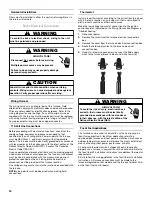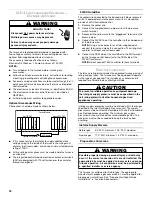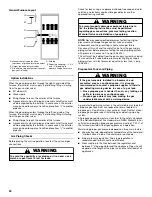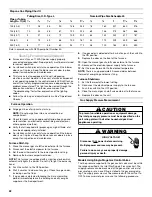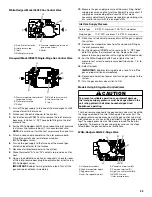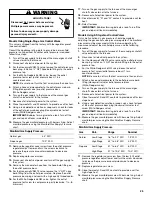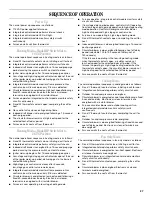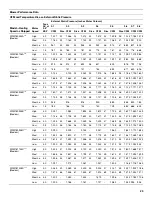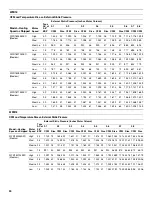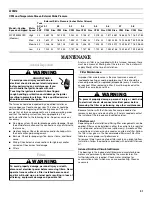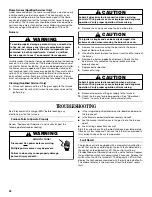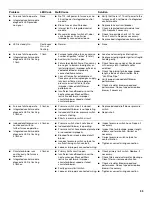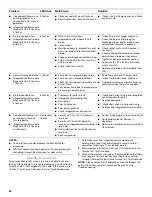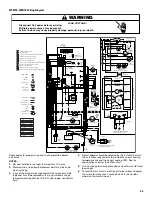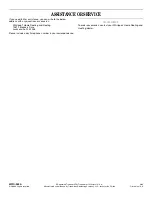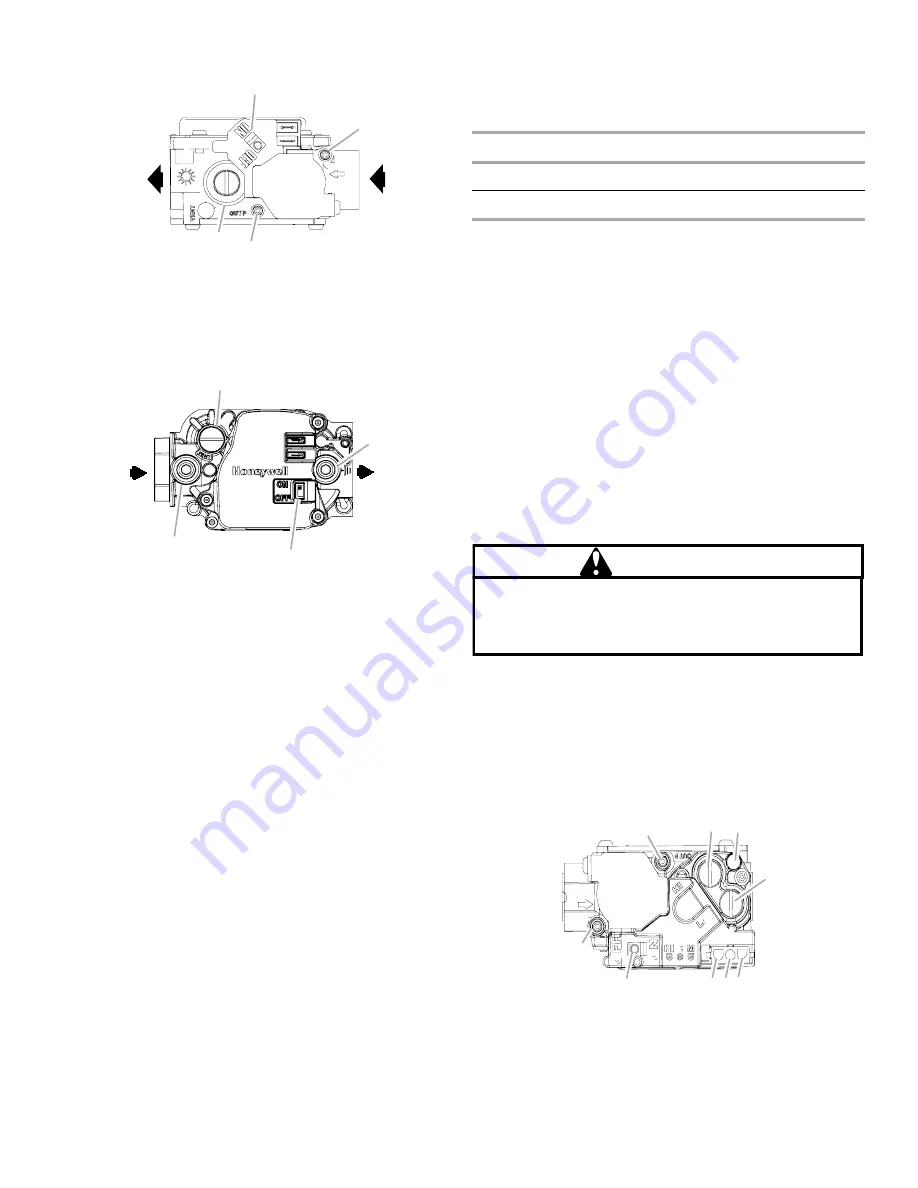
23
White-Rodgers Model 36G22 Gas Control Valve
Honeywell Model VR8215 Single-Stage Gas Control Valve
1. Turn off the gas supply to furnace at the manual gas shutoff
valve external to the furnace.
2. Disconnect all electrical power to the system.
3. For the Honeywell VR8215 valve, remove the inlet pressure
boss plug. Install an
¹⁄₈
" NPT hose barb fitting into the inlet
pressure tap.
4. For the White-Rodgers 36G22 valve, loosen the inlet pressure
test screw (inlet pressure boss) 1 turn counterclockwise.
NOTE: Be sure to not turn the test screw more than one turn.
5. Attach a hose and manometer to the inlet pressure barb
fitting (Honeywell valve) or inlet pressure boss
(White-Rodgers valve).
6. Turn on the gas supply to the furnace at the manual gas
shutoff valve external to the furnace.
7. Reconnect all electrical power to the system.
8. Close thermostat “R” and “W” contacts to provide a call for
heat.
9. Using a leak detection solution or soap suds, check for leaks
at the inlet pressure boss plug (Honeywell valve) or test screw
(White-Rodgers valve).
IMPORTANT: Bubbles forming indicate a leak. Turn off the
gas and repair all leaks immediately.
10. Measure the gas supply pressure with burners firing. Adjust
supply pressure using the Inlet Gas Supply Pressure chart. If
supply pressure reading differs from the chart, make
necessary adjustments to pressure regulator, gas piping size,
etc., and/or consult with the local gas utility.
11. Disconnect all electrical power and turn off the gas supply to
the system.
12. Remove the manometer hose from the hose barb fitting on
the inlet pressure boss.
13. For the Honeywell VR8215 valve, remove the
¹⁄₈
" NPT hose
barb fitting from the inlet pressure tap. Replace the inlet
pressure boss plug and seal with a high quality thread sealer.
14. For the White-Rodgers 36G22 valve, tighten the inlet
pressure test screw to seal pressure port (clockwise, 7 in.-lb
minimum).
15. Retest for leaks.
IMPORTANT: Bubbles forming indicate a leak. Turn off the
gas and repair all leaks immediately.
16. Reconnect all electrical power and turn on gas supply to the
system.
17. Turn the gas control valve switch to ON.
Models Using 2-Stage Gas Control Valves
The line pressure supplied to the gas control valve must be within
the range specified in the Inlet Gas Supply Pressure chart. The
supply pressure can be measured at the gas control valve inlet
pressure boss or at a hose fitting installed in the gas piping drip
leg. The supply pressure must be measured with the burners
operating. To measure the gas supply pressure, use the steps
listed below the gas control valve illustrations.
White-Rodgers 36G54 2-Stage Valve
A. On/off selector switch
B. Inlet pressure tap
C. Inlet \
D. Outlet pressure tap
E. Pressure regulator adjustment
(under cap screw)
F. Outlet
A. Pressure regulator adjustment
(under cap screw)
B. Outlet pressure tap
C. Outlet
D. On/off selector switch
E. Inlet pressure tap
F. Inlet
A
B
D
E
F
C
A
B
C
D
E
F
Inlet Gas Supply Pressure
Natural gas
5.0" W.C. minimum; 10.0" W.C. maximum
Propane gas
11.0" W.C. minimum; 13.0" W.C. maximum
A. Outlet pressure boss
B. High-fire regulator adjust
C. Regulator vent
D. Low-fire regulator adjust
E. Coaxial coil terminal (M)
F. Common terminal (C)
G. High-fire coil terminal (HI)
H. ON/OFF switch
I. Inlet pressure boss
Goodman 61
To prevent unreliable operation or equipment damage,
the inlet gas supply pressure must be as specified on the
unit rating plate with all other household gas-fired
appliances operating.
CAUTION
A
B
C
D
E
F
G
H
I

